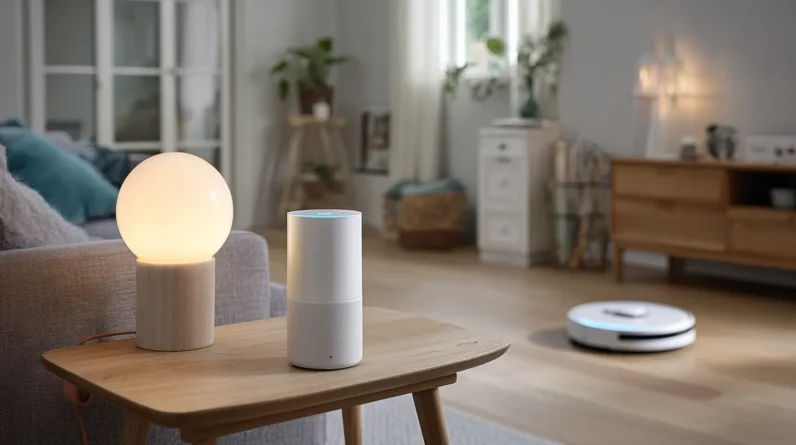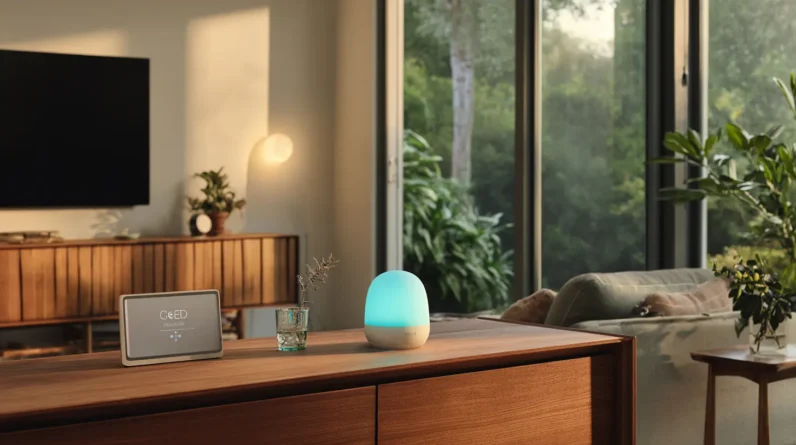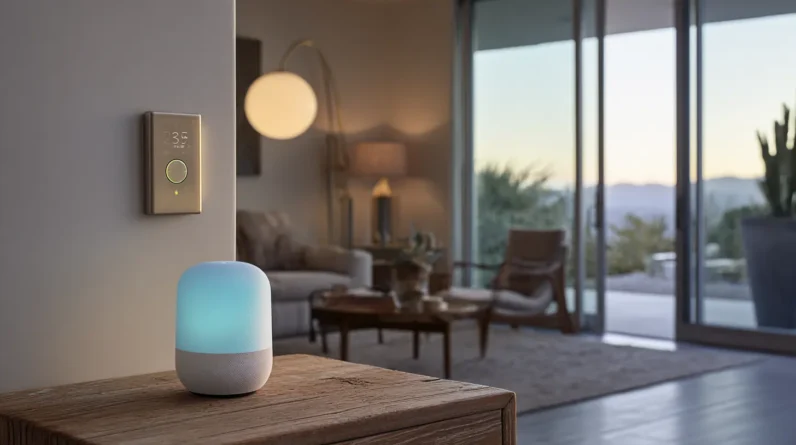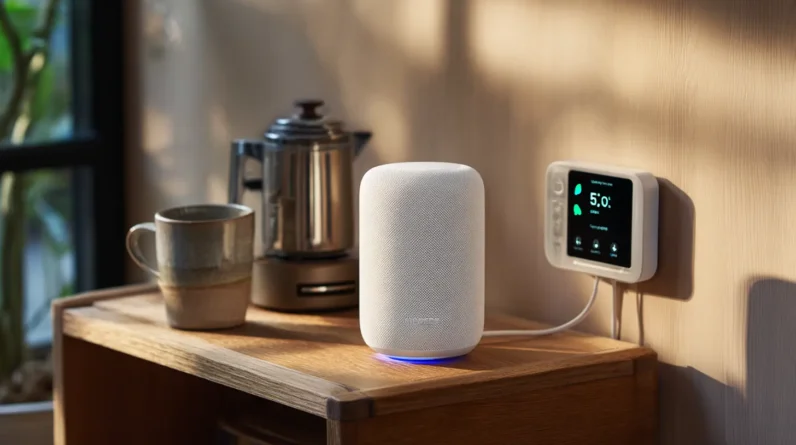
Smart home ecosystems offer growing families a seamless blend of convenience, security, and efficiency. We’ve seen voice-controlled assistants like Alexa and Google Home revolutionize daily tasks, while AI-powered security systems provide peace of mind. Energy management solutions optimize resource use, cutting costs and promoting sustainability. Connected baby monitors offer real-time insights into infant well-being, and automated chore systems free up valuable family time. As these technologies evolve, we’re witnessing increased integration and predictive capabilities, paving the way for truly intuitive homes. The future of family living is smart, and it’s adapting to meet our ever-changing needs. Let’s explore how these innovations can transform your household.
Voice-Controlled Home Assistants
Revolutionizing the way we interact with our homes, voice-controlled home assistants have become the cornerstone of modern smart home ecosystems. These AI-powered devices, such as Amazon’s Alexa, Google Assistant, and Apple’s Siri, offer hands-free control over various household functions. We can effortlessly manage lighting, thermostats, security systems, and entertainment simply by speaking commands.
For growing families, these assistants provide invaluable support. They can set reminders for important tasks, answer children’s questions, and even assist with homework. Advanced natural language processing allows for more intuitive interactions, while machine learning algorithms continuously improve their understanding of our preferences and routines. As these systems evolve, we’ll see increased integration with IoT devices, enabling more sophisticated automation and predictive capabilities. The future of voice-controlled assistants lies in their ability to anticipate our needs and seamlessly coordinate multiple smart home components.
Smart Security Systems
A cornerstone of any comprehensive smart home ecosystem, smart security systems offer families unprecedented levels of protection and peace of mind. We’re seeing rapid advancements in this sector, with integration of AI-powered cameras, motion sensors, and smart locks. These systems now offer real-time monitoring, facial recognition, and anomaly detection, alerting us to potential threats instantly.
We’re particularly excited about the emergence of multi-layered security protocols. These combine traditional alarm systems with cutting-edge technologies like infrared sensors and acoustic detectors. They’re also increasingly interoperable with other smart home devices, allowing for automated responses to security breaches. For instance, when an intrusion is detected, lights can activate, doors can lock, and cameras can begin recording automatically. As we move forward, we anticipate even more sophisticated integrations, potentially incorporating drone surveillance and predictive analytics to further enhance home security.
Energy Management Solutions
While securing our homes is paramount, optimizing energy usage is equally vital for a truly smart home ecosystem. We can achieve this through advanced energy management solutions that integrate seamlessly with our existing smart devices. These systems utilize AI-driven algorithms to analyze our household’s energy consumption patterns, automatically adjusting thermostats, lighting, and appliances for maximum efficiency.
We’ll see significant reductions in our utility bills by implementing smart meters, which provide real-time energy usage data, allowing us to make informed decisions about our consumption habits. Additionally, we can incorporate renewable energy sources like solar panels, which can be monitored and controlled through our smart home hub. By embracing these cutting-edge technologies, we’re not only reducing our carbon footprint but also future-proofing our homes against rising energy costs and potential grid instabilities.
Connected Baby Monitors
Connected baby monitors have transformed the way we care for our little ones, offering unprecedented peace of mind and convenience. These devices integrate seamlessly into our smart home ecosystems, providing real-time audio and video feeds directly to our smartphones or tablets. We can now monitor breathing patterns, track sleep cycles, and receive alerts for unusual sounds or movements. Advanced models incorporate AI-driven analysis to detect potential issues before they escalate.
Many connected monitors also feature two-way communication, allowing us to soothe our babies remotely. Some even integrate with other smart home devices, adjusting room temperature or playing lullabies automatically. As we look to the future, we can expect these monitors to become even more sophisticated, potentially incorporating wearable technology for more accurate health monitoring and predictive analytics to anticipate our babies’ needs proactively.
Automated Household Chores
As we move beyond monitoring our children, smart home ecosystems extend their reach to tackle the daily grind of household chores. Automated vacuum robots, guided by AI and advanced sensors, navigate our homes with precision, adapting to varying floor types and obstacles. Smart dishwashers optimize water usage and cycle times based on load size and soil levels, while connected washing machines analyze fabric types to select ideal wash settings.
We’re seeing the emergence of multi-functional cleaning robots capable of mopping, dusting, and even window washing. These devices integrate with home assistants, allowing us to schedule cleanings or initiate them remotely. Energy management systems optimize the operation of appliances, reducing power consumption during peak hours. As these technologies evolve, we can expect more sophisticated task prioritization, predictive maintenance, and even robots capable of folding laundry and putting away dishes, further streamlining our domestic routines.
Conclusion
We’ve explored a symphony of smart home solutions tailored for growing families. From voice-controlled assistants to automated chores, these technologies are revolutionizing our daily lives. As we look to the future, we’ll see even more seamless integration and AI-driven predictive capabilities. The key lies in choosing ecosystems that scale with our families’ needs, prioritizing interoperability and robust security protocols. Let’s embrace these innovations to create homes that are not just smart, but truly intuitive and nurturing.







